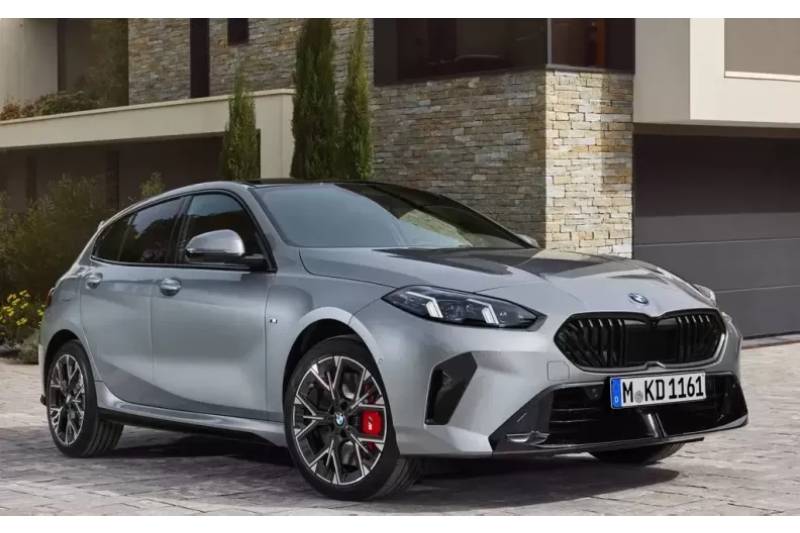Sources close to the German automaker claim that BMW has approved the new electric i1 and i2 models.
The two new models, which are now being developed at the company’s FIZ R&D center in Munich, will be offered for sale later this decade alongside modernized iterations of the 1 Series and 2 Series, which are powered by combustion engines.
The goal is to provide potential buyers of BMW’s electric vehicle lineup—which starts with the £46,205 iX1—more reasonably priced options.
The i2 will be a small crossover with the option of a coupé bodystyle, while the new i1 is anticipated to be offered as a hatchback or saloon. The i2 is seen by insiders as the spiritual successor of BMW’s 2013–2022 model year i3 hatchback, which was the company’s first electric vehicle.
BMW sees its future operating in all key segments and is still committed to the 1 Series and its variants. This is in sharp contrast to rival Mercedes-Benz, which plans to discontinue the A-Class in 2026.
Entry-level models like the 1 Series and 2 Series are crucial for BMW to expand in all regions and “connect with the younger generation,” according to Bernd Körber, the company’s product chief, who recently spoke with Autocar.
“Of course they have lower profitability but they also fulfil a different purpose in getting younger customers and developing [BMW] in certain markets,” Körber continued.
“So, yes, they are still a part of our strategy, and having two brands in the market is a good thing, with Mini playing a major role,” the spokesperson said.
Körber felt that BMW had a chance to increase its market share with the 1 Series as a result of the A-Class bowing out.
The more sporty i2 is scheduled to debut in 2028, after the electric i1 is scheduled to debut in 2027. But the two new compact EVs have been designed on the new dedicated Neue Klasse electric car architecture, while the upgraded 1 Series and 2 Series continue to ride on the current FAAR platform.
The Neue Klasse X and saloon designs give an indication of the new structure’s 800V electric architecture, which can handle electric drivetrains with one, two, or four motors.
The Neue Klasse platform comes in two different flavors: the NBx, which stands for front- and four-wheel drive, and the NAx, which stands for rear- and four-wheel drive.
Additionally, NAx serves as the foundation for two platforms: the weight-optimized ZAx platform, which is only intended for use with upcoming electric sports vehicles from BMW’s M division, and the bigger NDx platform for luxury-class models.
The second-generation iX3 SUV and i3 saloon, which are based on the Neue Klasse ideas, are among the cars that will use NAx and offer rear- or four-wheel drive.
But the upcoming i1 and i2, which come with front-wheel drive as standard or four-wheel drive as an option, will be the first BMW cars built on the NBx platform.
In an attempt to attain higher economies of scale, plans call for the electric iX1 and its Mini Countryman sister to likewise move from the 400V FAAR platform to the 800V NBx platform, Autocar has been informed.
New cylindrical battery cells are planned for the Neue Klasse designs.
The sixth-generation battery, which comes in two distinct lengths (95mm and 120mm) and a standard diameter of 46mm, has been designed with updated cell chemistry, which is expected to offer significantly better performance in future generations.
Within the next 24 months, BMW intends to construct six new vehicles based on this electric design, keeping the Neue Klasse model line on schedule for debut in 2025.
Within the next 24 months, BMW intends to construct six new vehicles based on this electric design, keeping the Neue Klasse model line on schedule for debut in 2025.
Neue Klasse won’t be a consumer-facing brand or moniker, and the vehicles based on the architecture will go by standard model names like 3 Series and X3, according to Körber, who also revealed that Insiders refer to the i2 as the i3 hatch’s spiritual successor.
BMW, he continued, “will not change its naming logic” for its models, in contrast to Audi, which has made combustion cars odd-numbered and electric cars even-numbered. According to Körber, the first Neue Klasse models are currently in the “final stages” of development and getting ready for manufacturing. “We have built the first pre-series cars and have driven them,” Körber declared.
According to Körber, Neue Klasse comprises a whole new custom electric architecture in addition to cutting-edge software and connection features that will be included in all upcoming BMW models, independent of the technology behind them.
It also alludes to a new design theme that will be used on all next BMW models; the electric vehicles will not be distinguished from other models, such as the 4 Series and 5 Series, which have the same fundamental appearance as the corresponding i4 and i5 models.
In a comparatively short amount of time, Körber promised, “We will change the entire portfolio within a relatively short period of time, so that it has one look and feel and also the same capabilities,”
“Our ambition is that we unify that in a way that ideally one push of the button and your entire portfolio gets updated.”
